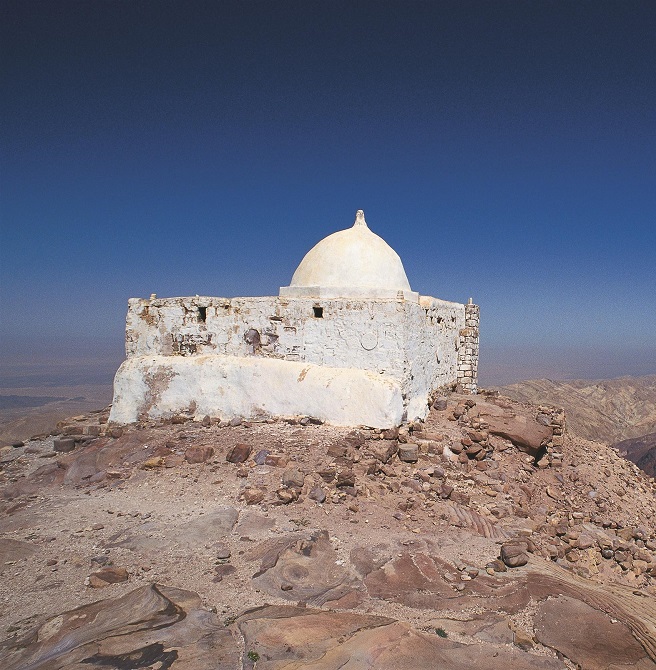
Aaron was a prophet, high priest, and older brother of Moses. He accompanied the Hebrew people on their journey from Egypt to the land of Canaan, but he did not allow them to enter the land, like Moses. Regarding Aaron’s death, the Book of Numbers states that immediately after a suspicious water incident, Aaron climbed with his son Lazarus and Moses to Mount Hor, located on the borders of the land of Edom, in the area south of the Dead Sea, and there Moses stripped Haun of his priestly clothes and dressed them for his son Lazarus, then Aaron died on the top of the mountain, west of Petra City.

Aaron was a prophet, high priest, and older brother of Moses (Exodus 7:7). The Bible states that, unlike Moses who was raised in the Egyptian royal court, Aaron and his older sister Mary remained with their relatives in the eastern frontier of Egypt (Goshen), the land given to the Hebrews by Pharaoh Joseph (Genesis 45:9-10). When Moses first confronted the Pharaoh of Egypt to set the Israelites free, Aaron was the spokesman for his brother Moses before Pharaoh (Exodus 7:1). The law, given to Moses at Sinai, granted Aaron the priesthood to him and his male descendants, and he became the first high priest of Israel.
Aaron, like Moses, was not allowed to enter the land of Canaan with the children of Israel, because the two brothers showed their impatience at the water of Meribah (Kadish) in the last year of their journey in the desert, so although Moses was commanded to talk to the rock to give water, he hit the rock with his stick twice And the Lord said to Moses and Aaron: Since you did not believe in me and did not sanctify me in the eyes of the children of Israel, therefore you will not enter this congregation into the land which I gave you” (Numbers 20:12.)
Regarding Aaron’s death, the Book of Numbers states that immediately after a suspicious water incident, Aaron climbed with his son Lazarus and Moses to Mount Hor, located on the borders of the land of Edom, in the area south of the Dead Sea, and there Moses stripped Haun of his priestly clothes and dressed them for his son Lazarus. The top of the mountain, and the people mourned over it for thirty days (Numbers 20:22-29). But the Book of Deuteronomy places these events in Mossert (Deuteronomy 10: 6), knowing that the distance between the two regions is to a large extent, for the itinerary of the journey mentioned in the book of Numbers (33: 31-37) records seven stages between Mossert and Jebel Hor.
The Prophet Aaron was mentioned in the New Testament of the Holy Book as well (Luke 1:5, Acts 7:40, and Hebrews 4:5, 7:11, 9:4). The shrine of the Prophet Aaron was also mentioned in the writings of the historian Josephus and Eusebius, and that Mount Aaron is Mount Aaron, where his tomb is located, west of the city of Petra, which is distinguished by its white dome. When the Swiss traveler Burckhardt discovered Petra in 1812 AD, he spoke to the local Bedouins, who told him about the tomb of Aaron or (Aaron) and about Wadi Musa.
The name of the mountain was mentioned at the site of the burial of the Prophet Aaron among Christian pilgrims in the seventh century AD. Greek Christians were running the site at that time, and priests visited it until the middle of the eighth century AD. In his writings, the historian Al-Masoudi mentioned Jabal Harun as "a mountain sacred to Christians." This mountain was then referred to during the visit of the Crusader leader Baldwin to the mountain in 1100 AD, when he saw a monastery at the top of the mountain. In 1217 AD, Mount Aaron was mentioned in the writings of a pilgrim named Thetmaros, who wrote about a church at the top of the mountain run by two Greek monks.